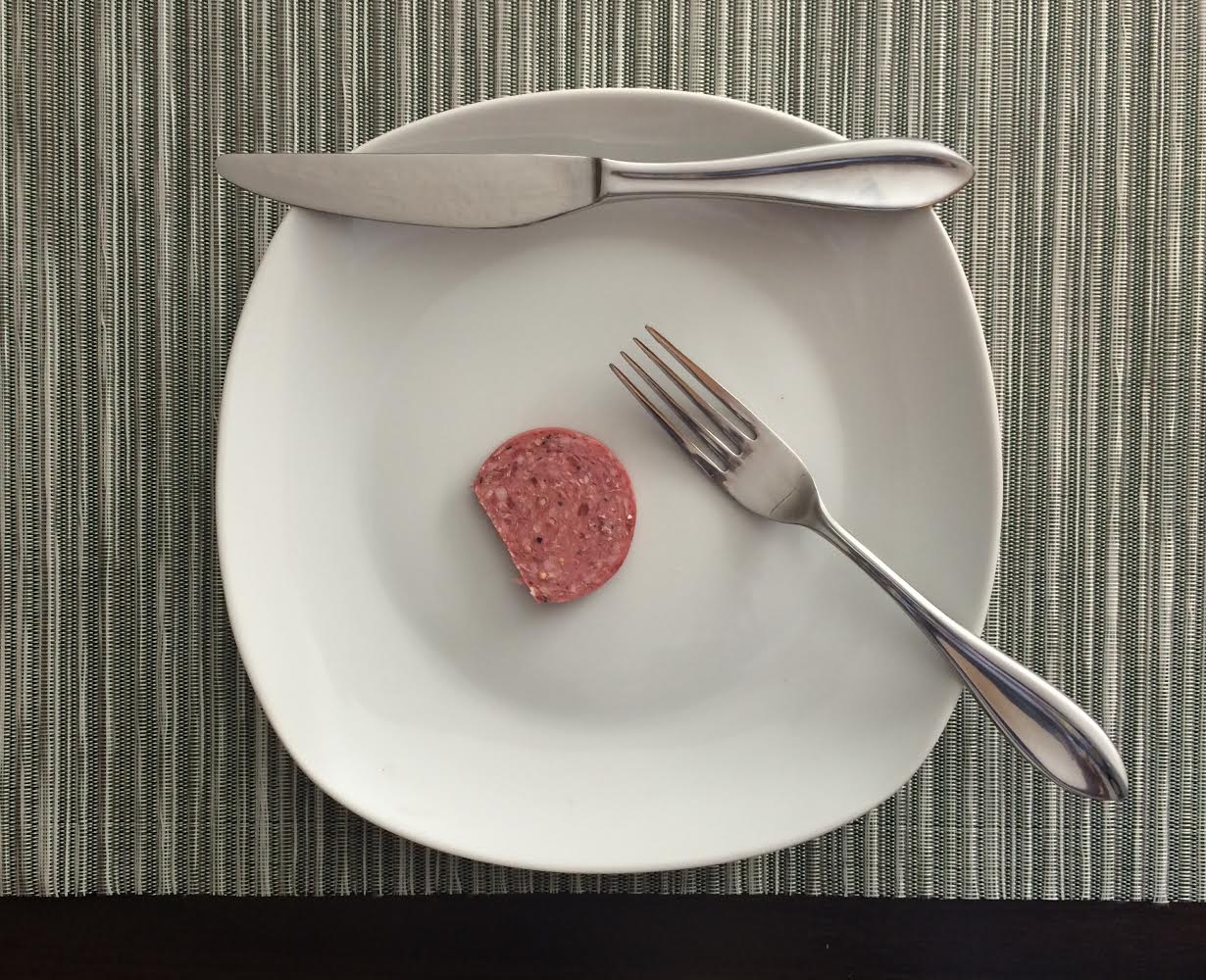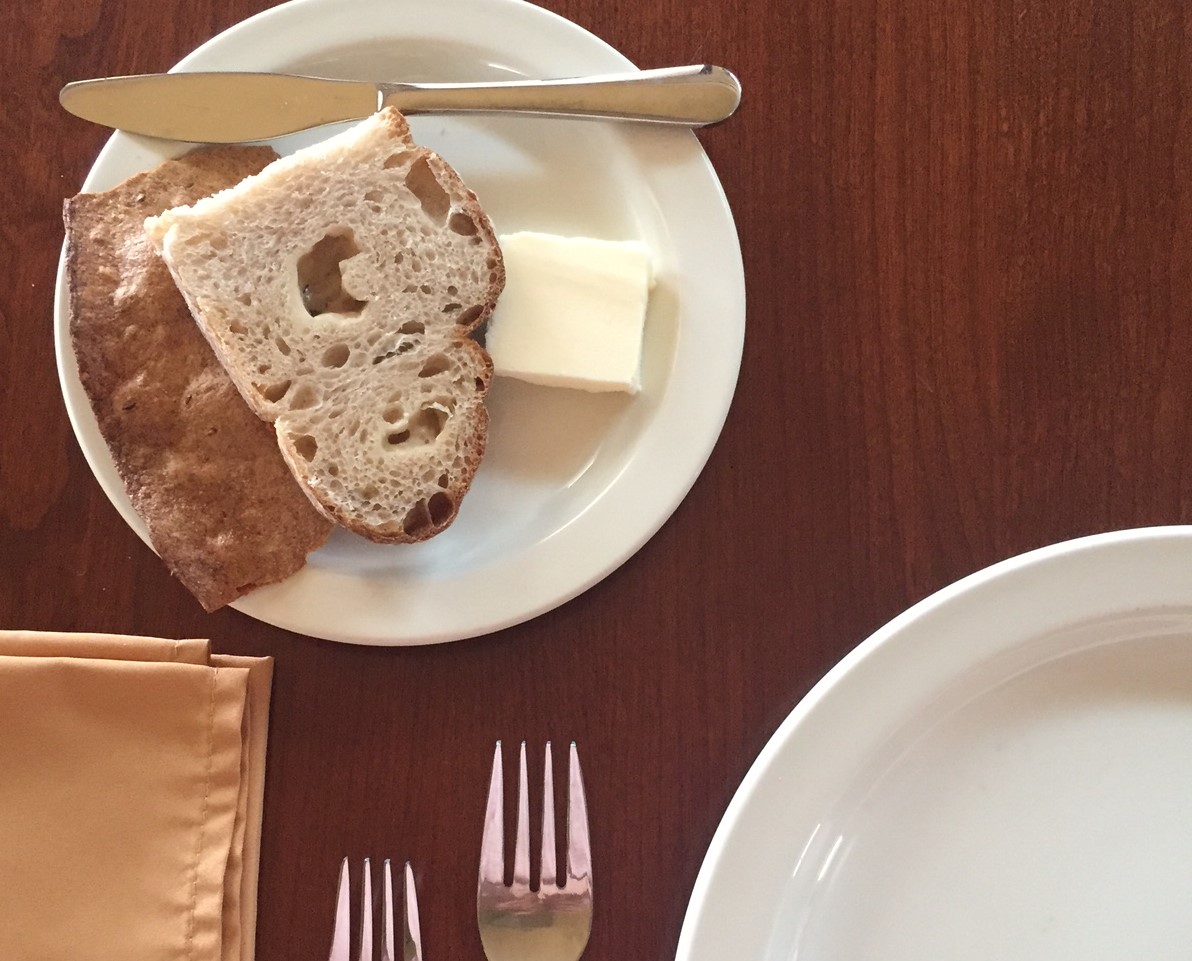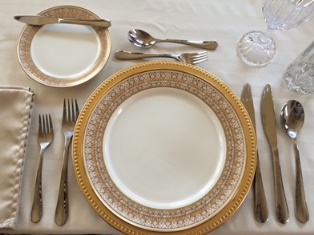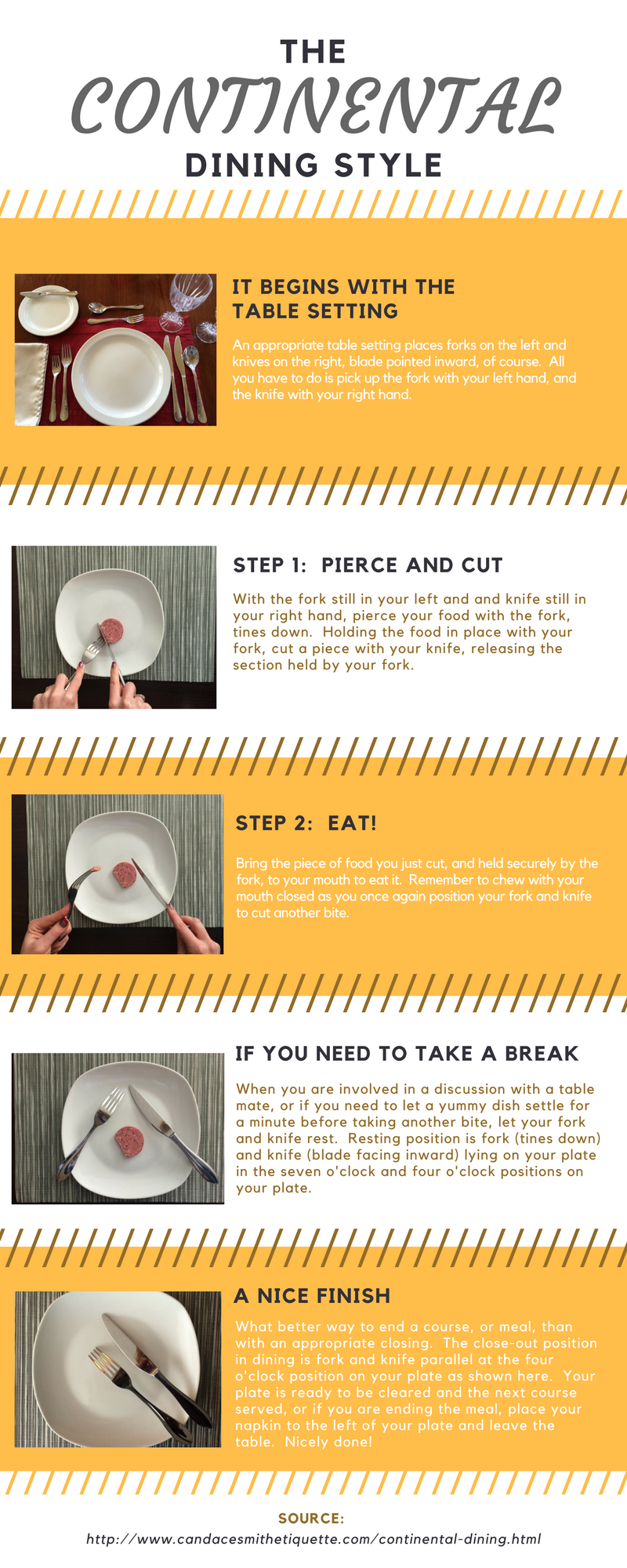The Continental Dining Style
Continental style dining consists of two steps, differing from the four steps in American style dining.
Used in knife and fork countries around the world, including the U.S., this dining style is simple to learn and easiest to use. Left-handers often prefer this style, as their dominant hand is in use throughout the meal.
The Two Steps of Continental Dining
|
Step 1
|
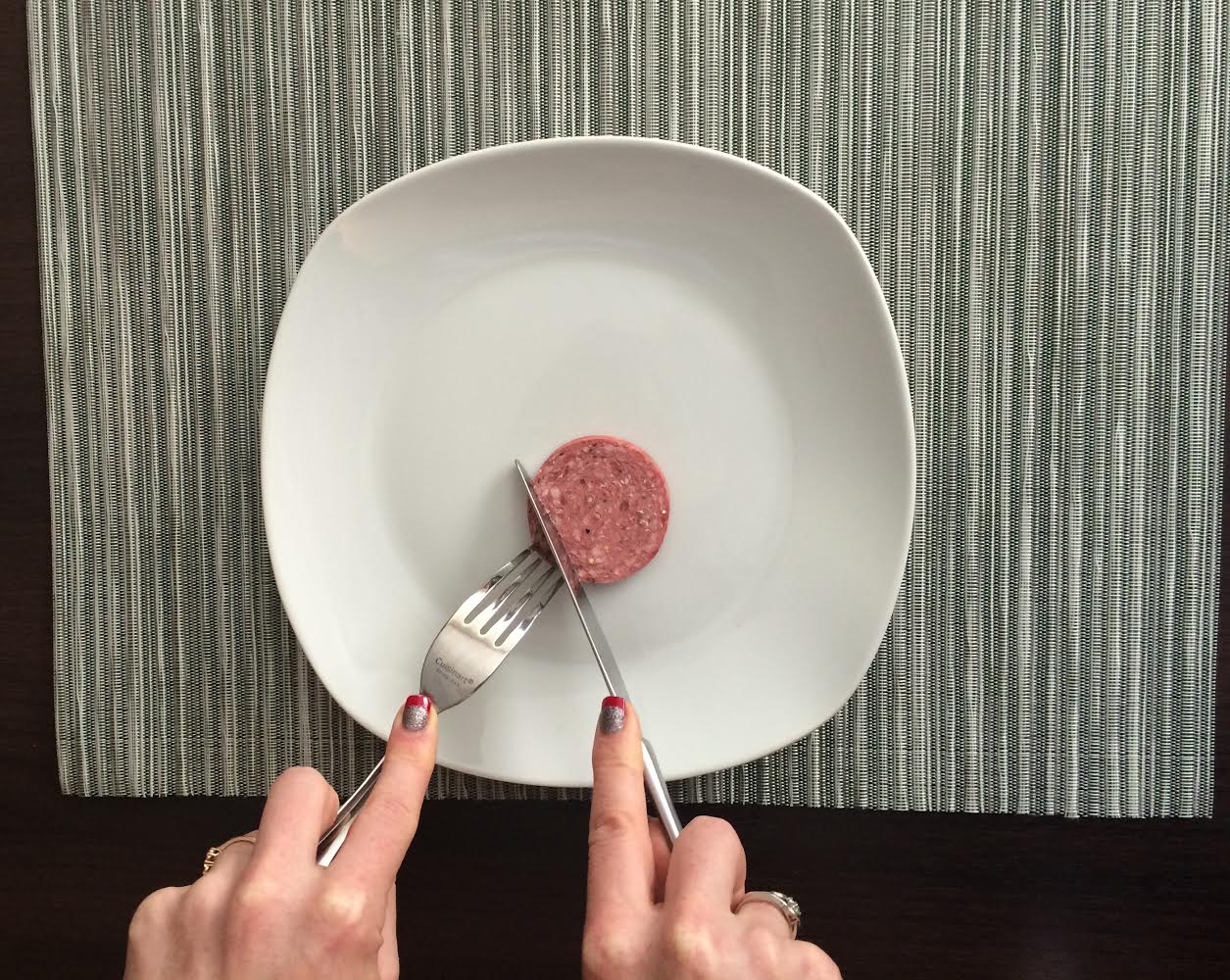 |
|
Step 2
|
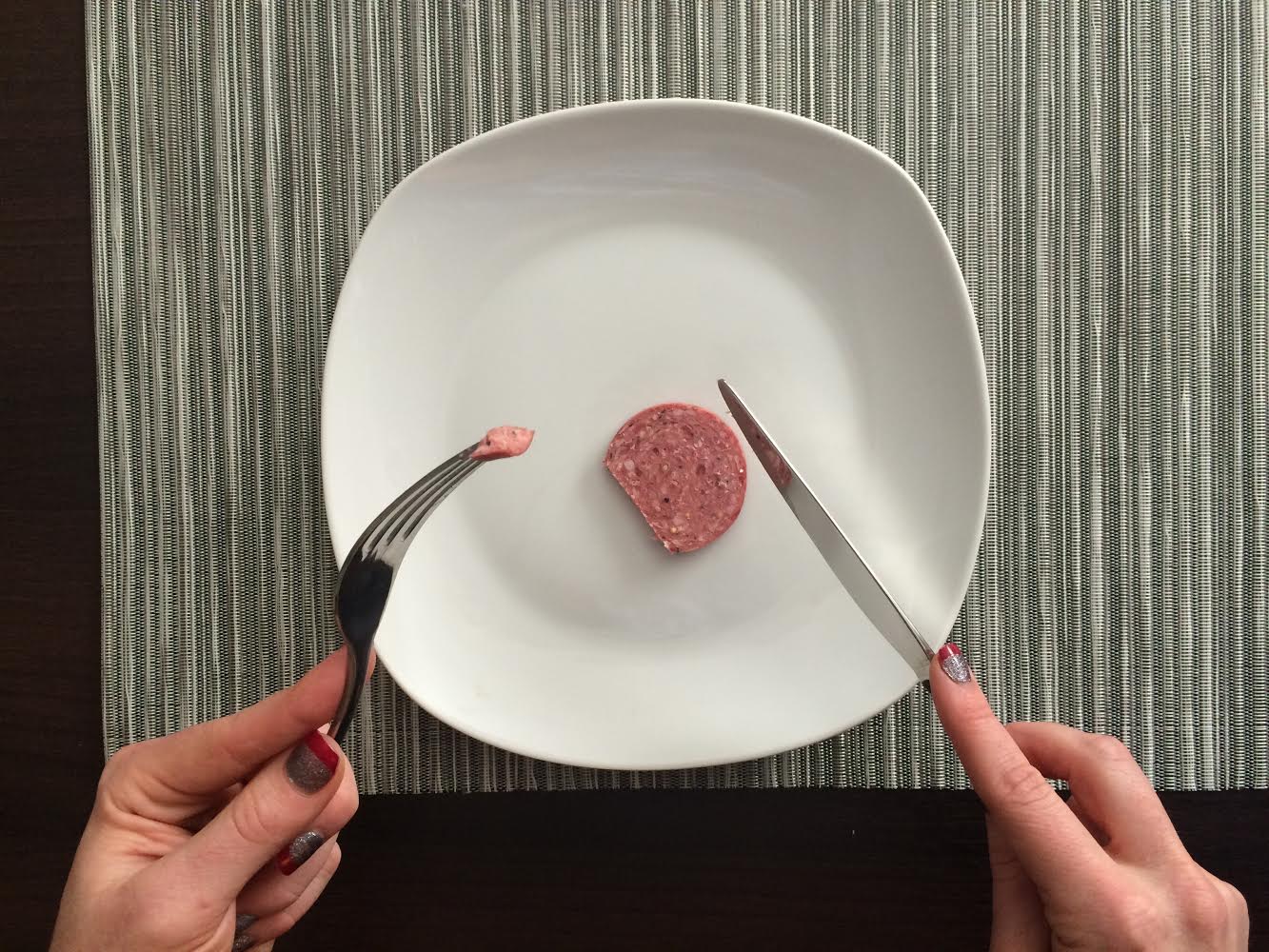 |
Taking a Break...Resting Position
When you need to pause during the meal - maybe you have a story to tell everyone at the table, or you need to take a drink or leave the table for a moment --place your utensils in resting position on the plate to indicate your pause.
|
Place your fork and knife in diagonal positions on each side of your plate--in an upside-down "V."
|
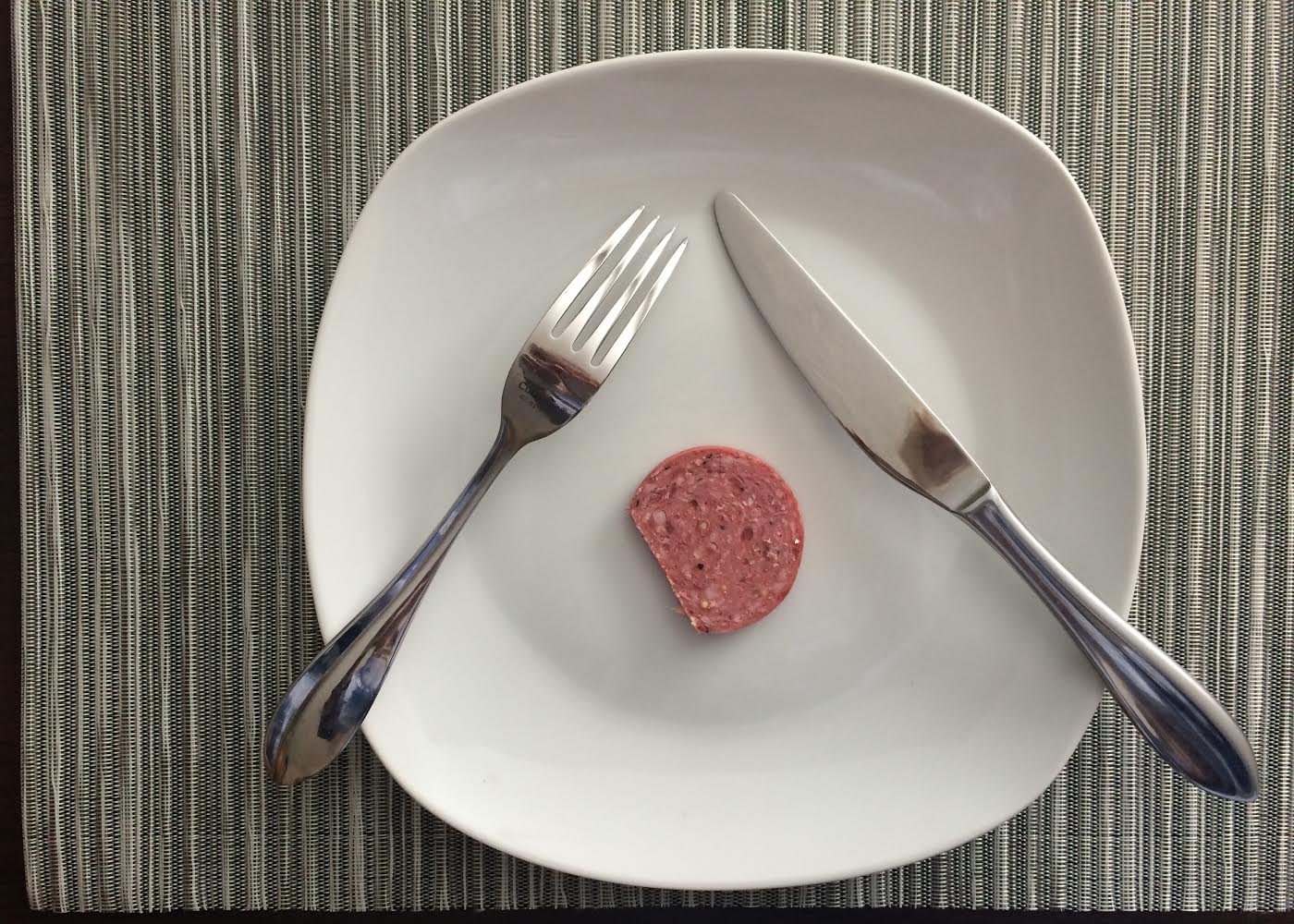 |
You've Finished Your Meal...Close-out Position
When you have finished the course or meal, place the knife and fork in close-out position. This signals to the server that your plate may be removed.
|
Lay your fork and knife side by side at the four o'clock position on your plate. (A 6:30 o'clock parallel position is also considered proper close-out for Continental style.) (Note: Servers often report that if the diner places the fork, tines up on the plate, it is easier for servers to pick up the plate--especially if the server is carrying more than one plate at a time.) |
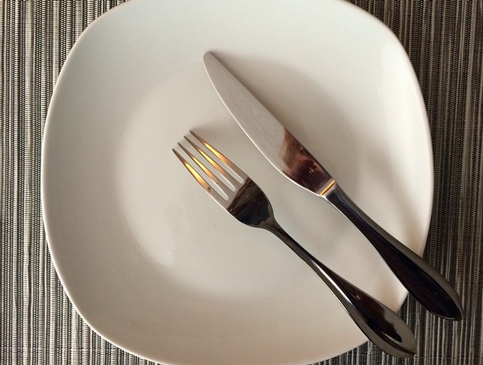 |
Now you can see why the Continental dining style is preferred by so many! With only two steps and the convenience of keeping your fork and knife in the same hand throughout the process, it is the easiest dining style to master.
Remember that when you are eating Continental style, both hands are fully engaged. (You won't be resting the knife by itself on the plate.) The knife is used not only to cut your food, but it also helps you load or push food on the fork for easy eating.
It is also the easiest to teach. Practice it with your family, and even young children. First show them how to hold the fork and knife with the handle placed in the palm of each hand. You'll be impressed with how quickly they learn.
If you're new to this style, be patient with yourself. It does take practice, but soon you'll be a pro.
